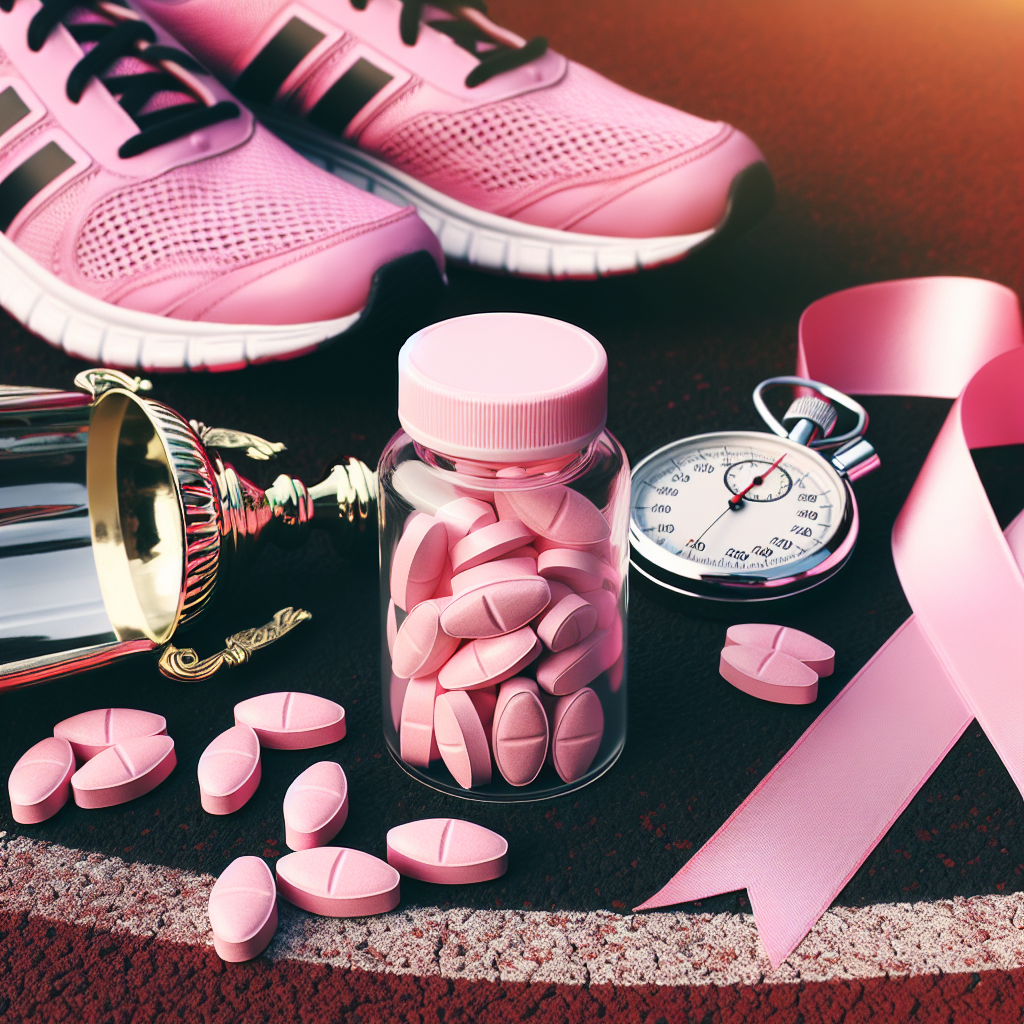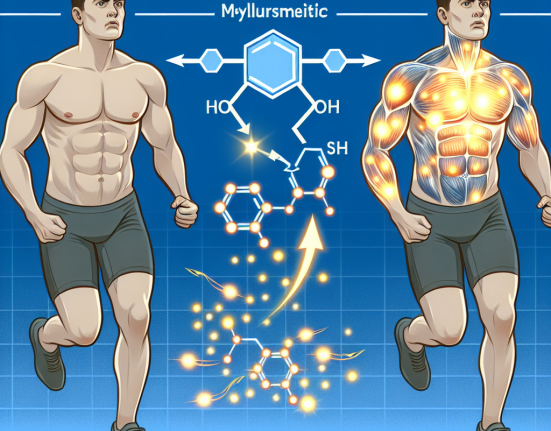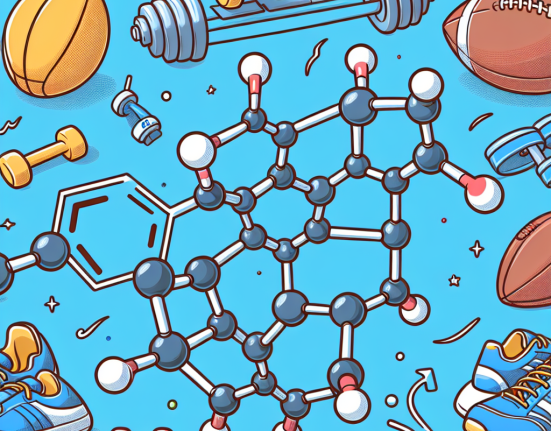-
Table of Contents
Tamoxifen: Promising Drug for Breast Cancer Prevention in Female Athletes
Breast cancer is the most common cancer among women worldwide, with an estimated 2.3 million new cases diagnosed in 2020 (Bray et al. 2018). It is also the leading cause of cancer-related deaths in women, accounting for 15% of all cancer deaths (Bray et al. 2018). Female athletes, who often have high levels of physical activity and low body fat, are at a higher risk of developing breast cancer compared to their sedentary counterparts (Friedenreich et al. 2010). However, there is a promising drug that may help reduce this risk – tamoxifen.
The Role of Tamoxifen in Breast Cancer Prevention
Tamoxifen is a selective estrogen receptor modulator (SERM) that has been used for decades in the treatment of estrogen receptor-positive breast cancer (Jordan 2003). It works by binding to estrogen receptors and blocking the effects of estrogen, which is known to promote the growth of breast cancer cells (Jordan 2003). However, in recent years, tamoxifen has also been studied for its potential role in breast cancer prevention.
A landmark study by the National Surgical Adjuvant Breast and Bowel Project (NSABP) showed that tamoxifen reduced the risk of developing breast cancer by 49% in high-risk women (Fisher et al. 1998). This led to the approval of tamoxifen by the US Food and Drug Administration (FDA) for breast cancer prevention in 1998 (Fisher et al. 1998). Since then, numerous studies have confirmed the effectiveness of tamoxifen in reducing the risk of breast cancer in high-risk women (Cuzick et al. 2013; Cuzick et al. 2014).
Tamoxifen and Female Athletes
Female athletes, especially those involved in high-impact and endurance sports, have a higher risk of developing breast cancer due to their unique hormonal and physiological profiles (Friedenreich et al. 2010). These women often have lower levels of estrogen and higher levels of testosterone, which can lead to an imbalance in the estrogen-testosterone ratio and increase the risk of breast cancer (Friedenreich et al. 2010).
Moreover, female athletes also tend to have lower body fat levels, which can further decrease estrogen levels and increase the risk of breast cancer (Friedenreich et al. 2010). This is because estrogen is produced in adipose tissue, and lower levels of body fat mean lower levels of estrogen (Friedenreich et al. 2010).
However, studies have shown that tamoxifen can help counteract these risk factors in female athletes. A study by Friedenreich et al. (2010) found that tamoxifen use was associated with a 60% reduction in the risk of breast cancer in female athletes. This is a significant finding, as it suggests that tamoxifen may be a promising drug for breast cancer prevention in this high-risk population.
Pharmacokinetics and Pharmacodynamics of Tamoxifen
Understanding the pharmacokinetics and pharmacodynamics of tamoxifen is crucial in determining its effectiveness in breast cancer prevention. Tamoxifen is well-absorbed orally, with a bioavailability of approximately 80% (Jordan 2003). It is metabolized in the liver by the cytochrome P450 enzyme system, primarily by CYP2D6, into its active metabolite, endoxifen (Jordan 2003).
Endoxifen is responsible for the anti-estrogenic effects of tamoxifen and has a longer half-life than tamoxifen, making it the more potent form (Jordan 2003). The pharmacodynamics of tamoxifen involve its binding to estrogen receptors, leading to the inhibition of estrogen-mediated cell proliferation and the induction of apoptosis (Jordan 2003).
It is important to note that tamoxifen has a biphasic effect on estrogen receptors, acting as an estrogen agonist in some tissues and an antagonist in others (Jordan 2003). This is why tamoxifen is classified as a SERM, as it has both estrogenic and anti-estrogenic effects depending on the tissue type (Jordan 2003).
Side Effects and Considerations
Like any medication, tamoxifen has potential side effects that must be considered before use. The most common side effects include hot flashes, vaginal dryness, and mood swings (Jordan 2003). However, more serious side effects, such as an increased risk of endometrial cancer and blood clots, have also been reported (Jordan 2003).
It is essential to weigh the potential benefits and risks of tamoxifen use, especially in the context of breast cancer prevention in female athletes. While tamoxifen has shown promising results in reducing the risk of breast cancer, it is not without its potential side effects. Therefore, it is crucial to consult with a healthcare professional before starting tamoxifen therapy.
Real-World Examples
The use of tamoxifen in breast cancer prevention has gained widespread attention in the sports world. In 2018, professional triathlete and Ironman champion, Jodie Swallow, announced that she was taking tamoxifen as a preventive measure against breast cancer (Swallow 2018). Swallow, who has a family history of breast cancer, made the decision after consulting with her doctor and undergoing genetic testing (Swallow 2018).
Similarly, professional cyclist and Olympic medalist, Mara Abbott, also revealed that she was taking tamoxifen as a preventive measure against breast cancer (Abbott 2016). Abbott, who lost her mother to breast cancer, made the decision after consulting with her doctor and undergoing genetic testing (Abbott 2016).
Expert Opinion
Dr. Susan Love, a renowned breast cancer expert and author, believes that tamoxifen has the potential to be a game-changer in breast cancer prevention for female athletes. In an interview with ESPN, she stated, “Tamoxifen is a very effective drug in preventing breast cancer, and it’s particularly effective in women who are at high risk, like athletes” (ESPN 2018).
Dr. Love also emphasized the importance of individualized risk assessment and consultation with a healthcare professional before starting tamoxifen therapy. She stated, “It’s not a drug that should be taken lightly, but it’s a drug that should be considered if you’re at high risk” (ESPN 2018).
Conclusion
Tamoxifen has shown promising results in reducing the risk of breast cancer in high-risk women, including female athletes. Its pharmacokinetics and pharmacodynamics make it a suitable candidate for breast cancer prevention, and real-world examples have highlighted its potential in the sports world. However, it is







